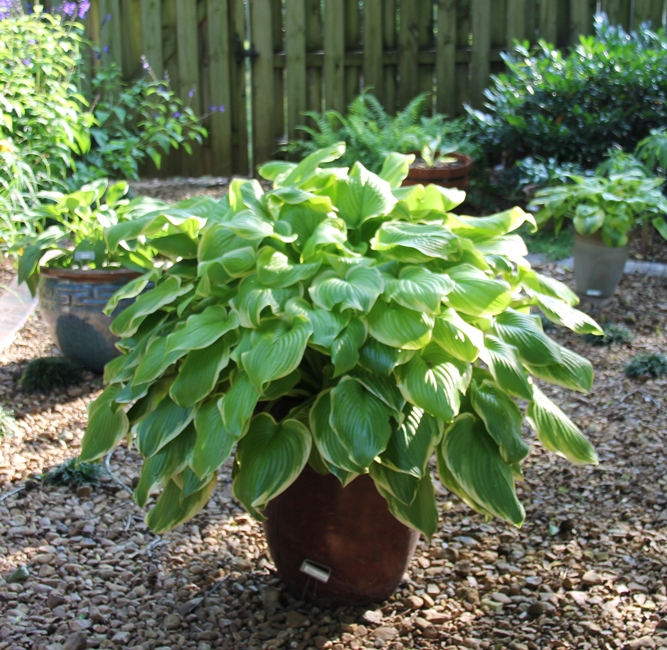When we buy a hosta we want it to look as perfect as possible. We have all seen the magazine pictures of lush, well grown hostas without a blemish or slug hole to mar their beauty. But, achieving that kind of perfection is a real challenge. It starts with finding the right balance of sun and shade for each cultivar. Hostas are considered to be shade plants but that does not mean that you can plant a hosta in the darkest corner of your garden or under your deck and expect it to grow well. A little sun will make all hostas grow better, but how much is too much? In their native habitat in Japan and other parts of Asia, hostas are found growing under a wide range of light conditions from several hours of direct sun to filtered shade, but they are seldom exposed to full sun. They also receive a lot of water in most areas where they grow. Those that are in more sun often grow in mountainous locations which the air is cooler and the sky is frequently shrouded with clouds. The conditions in which hostas grow in the wild are really difficult to replicate in our gardens so we usually grow them in some shade.

Deep shade is not beneficial to hostas either. In deep shade the leaves have less substance, be wider and far fewer leaves will be produced. Look on the floor of a deciduous forest and you will notice that very few plants, except the spring ephemerals like Trilliums, actually grow in those conditions. Hostas planted in more shade from trees will also need more watering. No hosta can compete with tree roots without supplemental watering. The trees will always win in the grab for moisture. Remember too that any garden that is treed will become shadier every year. Regular thinning and limbing of trees is necessary to provide the best growing conditions for hostas.
While we know that all hostas benefit from a little sun, unfortunately there are no sun loving hostas. As hosta expert Kevin Walek explains "there are hostas that like light and will often tolerate a great deal of sun but they do not like excessive heating of their leaves. And without other means to keep down the ground temperature and to cool their leaves they will burn and not look like you imagined they would." There are only hostas that will, given the right growing conditions, tolerate more sun. According to Mark Zilis, the author of the Hosta Handbook, "the ideal growing conditions for all hostas grown in more northerly climates, like ours, is bright dappled sunlight which creates a condition he calls open shade. Such a setting might receive a couple of hours of direct sunlight early in the morning or late in the day". That is the kind of light that occurs along the edges of deciduous forests. Many hostas, particularly the big blue leaved ones like partial shade, which can be described as two to four hours of direct but less intense morning or late afternoon sun. Direct afternoon sun is just too much for many hostas. Even a half an hour of hot sun is enough to scorch the leaves of some hostas or cause the centers to melt out.
If mid day sun can't be avoided try Hosta plantaginea, with its beautiful fragrant flower. Plantaginea and its progeny will be the most sun tolerant. In fact plantaginea does not grow well without at least three hours of direct sun. Some of these fragrant flowered hostas include Guacamole, 'Fragrant Bouquet' and 'Diana Remembered'. Gold leaved varieties with good substance like 'Sun Power' and 'Daybreak' also grow well. Other top picks recommended by local gardeners include 'August Moon' 'Gold Standard', and 'Invincible'. The colours on some of these varieties might bleach out in the sun but that is not necessarily unattractive. If you are planting a hosta in more sun mulching, amending the soil with lots of compost and regular deep watering preferably with a drip irrigation system will all help the hosta to thrive. I am grateful that hostas are easy to move because getting the perfect spot in our garden for any individual hosta might take a couple of tries.



